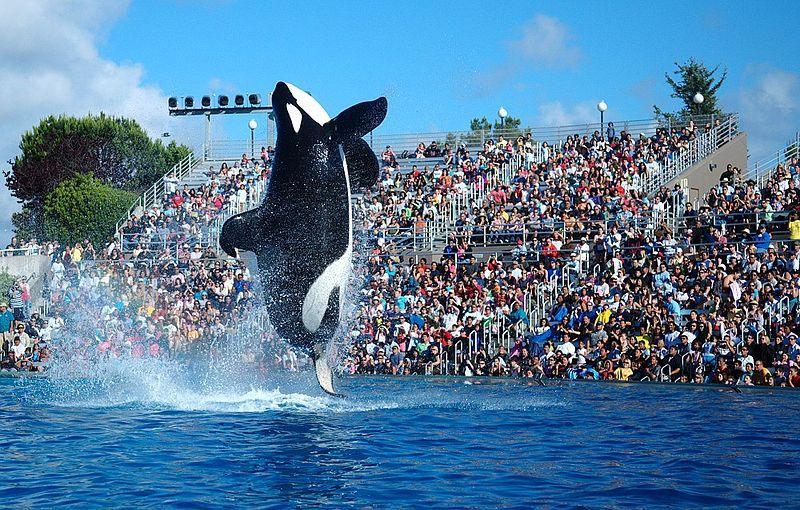SeaWorld’s Last Killer Whale Show
Warning, those in the front row have entered the Splash Zone! San Diego’s killer whales made their final splash last month as SeaWorld has decided to put an end to their Orca shows. They said that the remaining killer whales living at the facility will be the last and they are stopping the breeding program.
Thousands of people rushed to the stadium to watch the orcas leap into the air and perform breathtaking tricks for one last time as a part of SeaWorld’s “One Ocean” show. SeaWorld announced last March that it was canceling the signature show to make way for its new “natural orca encounters” experience, which shows off the whales in a “more natural” setting and does not feature them doing any tricks. These shows will be filled with educational programs emphasizing enrichment, exercise, and health with its remaining killer whales, CEO Joel Manby said on a conference call. The San Antonio and Orlando parks will end their orca shows by 2019.
The company has decided to end the theatrical orca performances due to a movie called Blackfish, which exposed SeaWorld’s cruel treatment towards the killer whales and their trainers. The state of California, along with others around the country, responded to the movie by scrutinizing SeaWorld greatly. Due to the backlash they received, the company was forced to make changes after a big blow to the sales of killer whale shows and the company’s shareholders.
The last show came days after SeaWorld announced the death of Tilkum, a well-known killer whale who lived in the Orlando park and who was featured in the Blackfish documentary after killing three trainers while in the Orlando facility. Tilkum exhibited many distressing animal behaviors, including floating for hours on end, which never occurs in the wild, and destroying his own teeth by chewing on his tank out of frustration. The movie mainly focuses on how devastating it can be to keep wild creatures in captivity for such a long period of time. The company also last month admitted that some of its employees had posed as animal-rights activists and that it had ended the practice — an acknowledgment that came after PETA last year accused a San Diego park worker spying on its anti-SeaWorld protests.
While many are happy to see that the orcas will no longer be forced to perform, others are sad to see the show come to an end. Sam Choate, a junior at Air Academy, said “I am sad to see the shows go. Going to California and seeing those whales perform tricks was a fun memory from my childhood, but I also understand why they need to stop.” Critics of SeaWorld are calling on the park to make more than just cosmetic changes to how it treats its animals and send them to a sea sanctuary instead of, once again, forcing them to perform in artificial orca shows. If you’d like to help create a sanctuary where SeaWorld’s orcas could one day retire, you can make a donation to The Whale Sanctuary Project, a team of former SeaWorld trainers and biologists who are working to open the world’s first-ever sanctuary for whales and dolphins.

Photo of a trainer performing with her orca in the Orlando facility via https://commons.wikimedia.org/w/index.php?curid=54116588

Oh hey! My name is Cole P., and I am a junior at Air Academy. I work hard and have a passion for writing. Also, I am considered a bit of a legend around...














Bethany Diaz • Mar 16, 2017 at 12:36 pm
I’m glad that the whales are being given a better environment and less stressful lives.
Ryn Wayman • Mar 16, 2017 at 12:35 pm
I’m glad the orca shows are ending but it is sad to be unable to relive that nostalgia from childhood
Ashlie Steel • Mar 16, 2017 at 12:31 pm
I grew up with these SeaWorld shows, but I am glad Tilikum is in a safer and better place. Wishing the best for the rest of the killer whales in the exhibits at SeaWorld.
Jake Werner • Mar 16, 2017 at 12:27 pm
Nice article! While I loved the show as a kid, its probably best given how bad SeaWorld treated them
Luke Negley • Mar 16, 2017 at 12:18 pm
So crazy that a killer whale killed someone!
Carter Rodny • Mar 16, 2017 at 12:16 pm
To infinity and beyonddd! –(lady in picture)